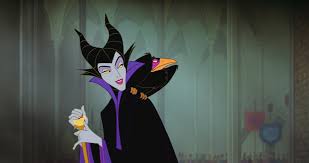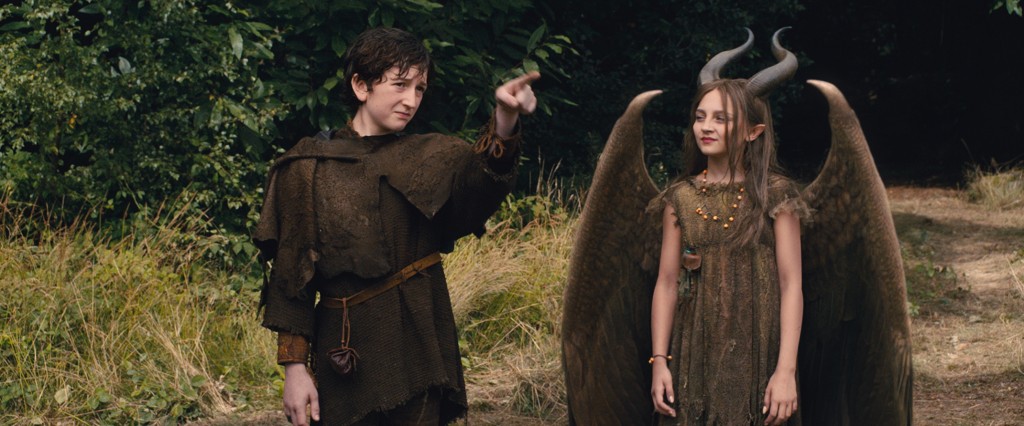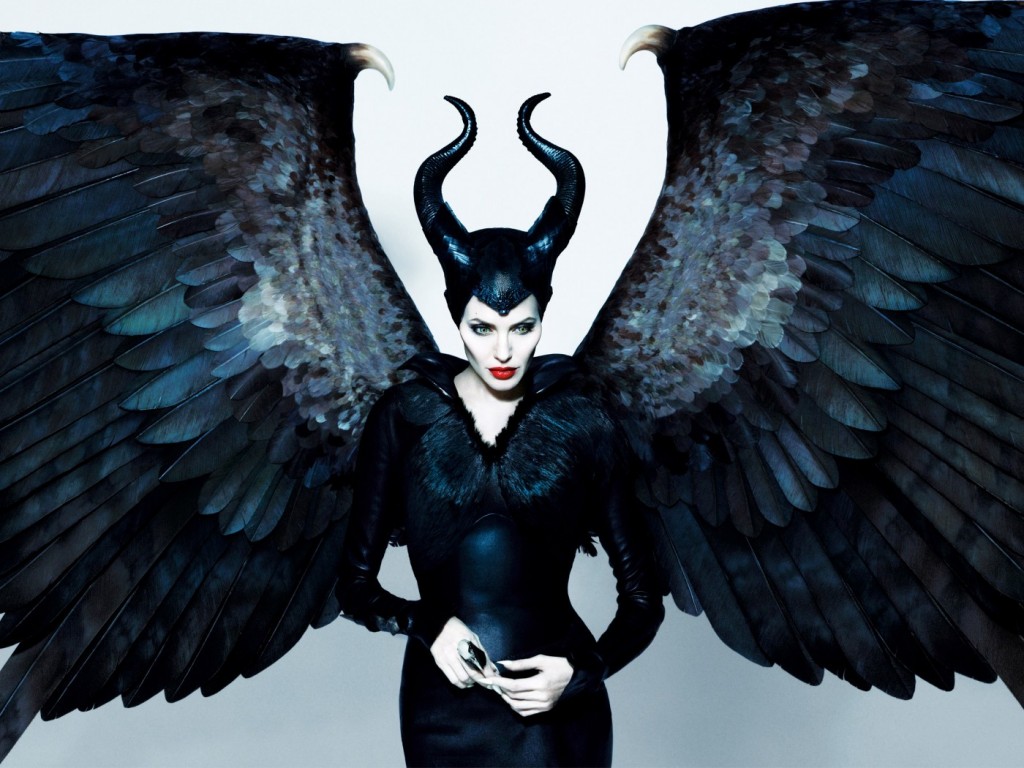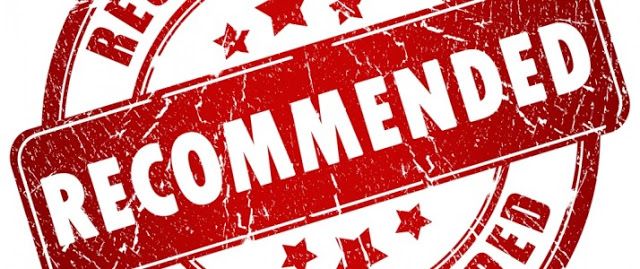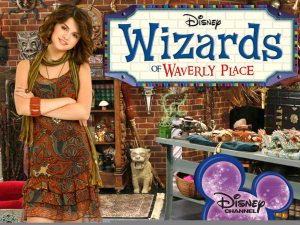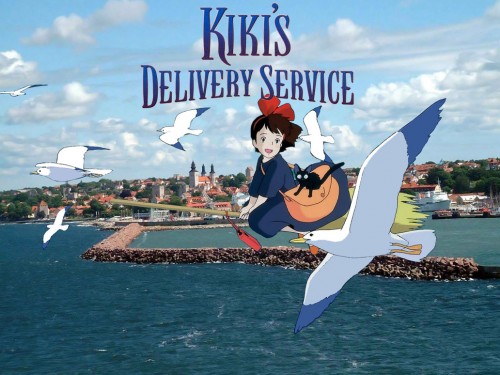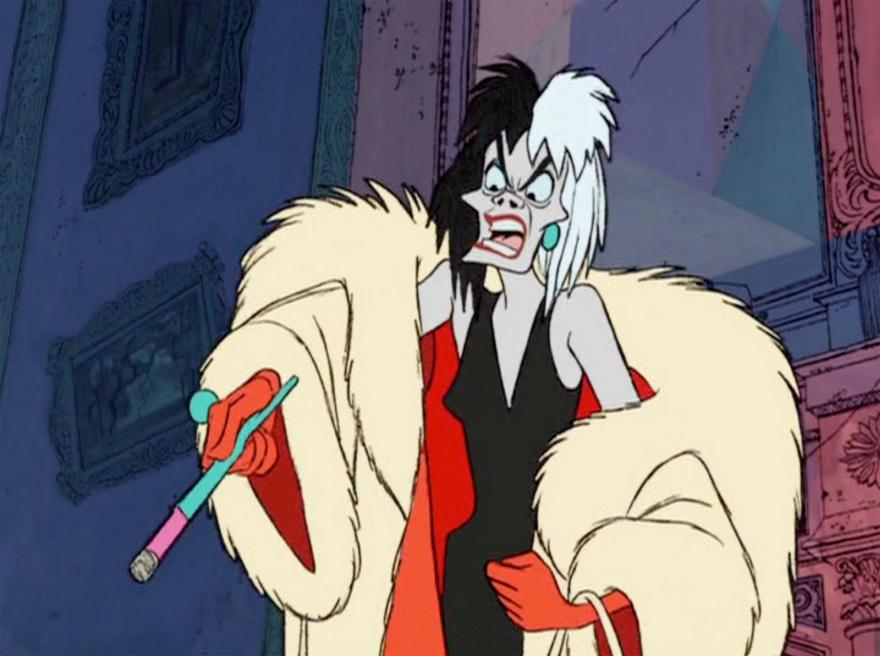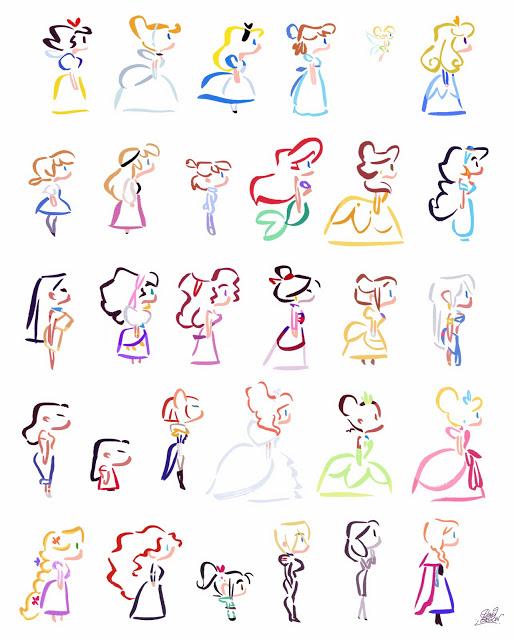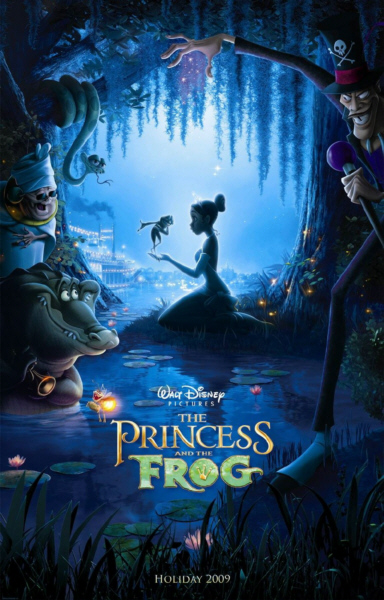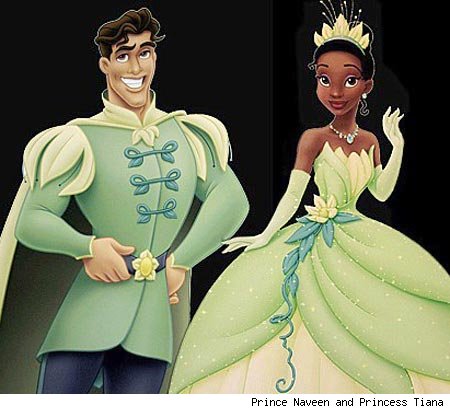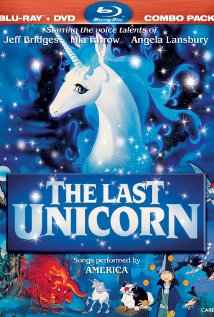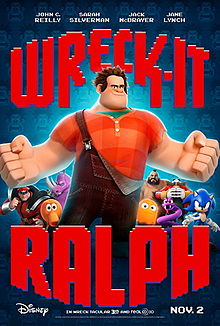
This guest post by Megan Ryland appears as part of our theme week on Child and Teenage Girl Protagonists.
If you haven’t met Kiki, you really should. She’s a 13-year-old girl who is about to start an adventure in Kiki’s Delivery Service (1989). As a witch, she must spend a year in an unfamiliar city, making her way in the world on her own and developing her skill or special talent. In the film, we meet her on the day she begins her journey and we follow her through her first steps in a new city, the development of her own flying delivery service, making new friends, and a crisis that only Kiki can solve. It’s a lovely story, but there’s something bigger at stake.
My interest is in what this story says about girls and agency as they step into the world. To highlight what’s special about Kiki’s adventure, I’ll be measuring it against The Little Mermaid (1989), released in the same year and also featuring a magical girl leaving home for the first time. Many things about Kiki’s Delivery Service set it apart from the standard fare, but I’m going to focus on the depiction of agency, the role of supportive women characters, and the protagonist’s motivation.
On My Own: Girls Leaving Home
Kiki’s Delivery Service carefully constructs a world where a girl’s agency is expected, accepted and supported, while Disney movies typically present a girl’s agency as unusual, forbidden, and denied. The difference between these two messages is that Kiki’s world anticipates and encourages her independence, while the women of Disney are typically punished for this.
For example, in The Little Mermaid Ariel wants to “live out of these waters,” but her father forbids her exploration of the human world and punishes this dream. Sea witch Ursula exploits Ariel’s desire to discover another world beyond her own as well. This is hardly an isolated incident. In Beauty and the Beast, Belle spends much of the movie trapped in a castle and any travel beyond of the control of the men in her life is punished by wolves, the Beast, Gaston, or townsfolk, depending on the transgression. In Aladdin, Jasmine wants to escape the palace that confines her world, but she is quickly returned – and then spends a not insignificant amount of the story imprisoned. Cinderella‘s world appears to be limited to her household, except for her secret, forbidden trip for a few hours of dancing, for which her stepmother punishes her. I am sensing a trend here.
Kiki begins her adventure with the blessing and support of her family, friends and community. Imagine that. In stark contrast to Disney movies, Kiki’s community gathers together to say goodbye and wish her well. They are excited and worried and happy for her, and this combination of support and concern is important. Kiki doesn’t live in a world of rainbows and sunshine where nothing could go wrong, but that doesn’t mean her parents (neither of whom are mysteriously absent) keep her locked up in a tower or hidden in the woods.
In fact, a neighbour who has come to see Kiki off asks her parents, “Aren’t you worried about Kiki living in a big city all alone?” and this type of concern is familiar to girls, who are often made aware that they are especially vulnerable. However, in this film, another townsperson immediately replies to this worry with an authoritative, “Of course they are, but Kiki will be just fine.” This matters. In this tiny moment, the film sets the rules of Kiki’s world from the start. It’s a world where independent 13-year-old girls can and do exist without punishment. They are not trespassing when they leave home. This is a girl’s world too.

Compare the father-daughter moments in the films for a little more insight into how a girl’s agency is viewed by her family. Kiki’s Delivery Service immediately establishes a bond between father and daughter, in part by showing their sentimental parting. When he hugs her, he wonders at how fast Kiki has grown up and gives her a squeeze, but he also gives his blessing and encouragement. He believes in her. The story begins with a hug and a father supporting his daughter’s wishes.

On the other hand, The Little Mermaid ends the movie with a father-daughter embrace, but this one arguably has a whole different set of meanings attached. Although it does indicate giving his blessing, King Triton is giving his daughter away at her wedding, which leaves a rather different impression. Ariel’s father spends most of story trying to force Ariel into the role and place he feels comfortable with, but eventually comes around to the idea of Ariel leaving the sea–to marry Eric. Safe in the arms of her husband, he can finally let Ariel go.

Other characters follow the same approach to agency as the father in each movie; in Kiki’s Delivery Service, characters explicitly encourage Kiki’s independence, while Ariel’s community is generally (loudly) opposed to her exploration of the human world. These differing perspectives on the acceptability and safety of exploration offer two very different visions of the risks girls face when they leave the nest (or the sea). Kiki’s world falls squarely in the pro-exploration and self-discovery camp. Ariel’s? Not so much.
Women as Friends, Mentors, Advisors, and More
Kiki’s world is also populated with a very different crowd than the average Disney movie. By different, I mean there are women in this movie who all vary in their physicality, personality and treatment of Kiki, making the world it presents surprisingly familiar. There are friends and mothers and business owners and artists and spoiled granddaughters and spunky old women and designers and city girls and scientists and snobs. Kiki interacts with all of these women, alongside a cast of men of many ages, statures and temperaments as well.
In The Little Mermaid, women play a much smaller part. Ariel has a chorus of sisters and encounters a series of women servants, but these women are all largely indistinguishable from one another and exchange few words with Ariel. Ariel is surrounded by men–her father, her chaperone Sebastian, her friends Flounder and Skuttle, her love interest Prince Eric, palace staff like Grimsby and Chef Louis, et al–but Ursula is the only woman Ariel has any meaningful exchanges with.
Ursula is actually a particularly interesting example to pull out of each movie, as there is a character of this name in both. In The Little Mermaid, Ursula is the evil sea witch who lives alone, aside from her eels and the “poor unfortunate souls” she’s tricked. She lures Ariel into a poor deal by dangling her freedom in exchange for her voice as a part of a scheme to steal King Triton’s power. She is considered evil, ugly and cruel, so her eventual death is a cause for celebration.

In Kiki’s Delivery Service, Ursula is a painter and recluse, living alone in her cabin in the woods except for the crows. She also makes a deal to help Kiki, but here she merely fixes a toy in exchange for Kiki completing chores. They become friends and when Kiki is later filled with self-doubt–so much so that she loses touch with her magic–Ursula offers her support and a place to stay. Ursula also explains how she has personally dealt with self-doubt about her paintings and encourages Kiki to stop putting so much pressure on herself and to believe in her abilities. In essence, she acts as a friend, mentor and role model to the younger girl.

Kiki lives in a generally supportive community, yes, but it is important to note that this is a community where she receives friendship, guidance and support from the women around her–like many girls do in real life. Kiki’s role models are the women who provide supportive guidance but always allow her to make her own decisions, unlike the advisors for Ariel (King Triton, Sebastian, and Ursula) who try to force her hand. It isn’t even that the movie is paying special attention to the bonds of “Sisterhood” and Kiki certainly doesn’t get along with all of the girls she meets. We just rarely see women talking to women about something other than men in film, so it stands out as important.
Your Heart’s Desire
A final vital aspect I would like to highlight is the difference in goals between Kiki and Ariel. Kiki is looking to discover her own skills and train as a witch, so she begins her own small business and works hard to earn a living by helping people. Kiki’s desires are personal and internal, and so are her obstacles. The main difficulty Kiki faces is her own self-doubt, lack of confidence and depression, with some hijinks thrown in. Watching Kiki’s tale, we see a girl determining her own fate and discovering her strengths, with the help of friends. She saves the day by overcoming her lack of confidence and recalling her power to fly in time to save her friend Tombo from a surely fatal fall.
In The Little Mermaid, Ariel’s wish for freedom to see the human world very quickly becomes a quest for a kiss and we don’t get to see a return to her curiosity about the world during the rest of the tale. Ariel’s goal just becomes about winning Eric, particularly from Ursula’s tentacles.

Unlike The Little Mermaid, romance is entirely optional and secondary in Kiki’s adventure, and not always desirable. Jiji, Kiki’s cat companion, actually falls in love, but his romance leads to his abandoning Kiki when she most needs him. Kiki’s own potential romantic subplot could be interpreted as an entirely platonic interaction, as Tombo is a persistent fan of the young witch, but Kiki’s feelings toward him are less clear. Kiki isn’t sure how to go about making friends in this new town, including a relatable uncertainty about how to approach Tombo. This growing relationship is slow moving and clearly secondary to Kiki’s obligations to her delivery service business. This makes her priorities seem practically opposite to Ariel’s concerns, as the mermaid gives up her fins and her community for a boy she’s known for three days.

Ariel’s goals are relational and external, and her obstacles are set to match. In The Little Mermaid, the day is saved with little to no action by Ariel, who is a bystander to many of the events. Her friends drag her to the wedding and delay the ceremony, while Prince Eric is the one to defeat Ursula. However, you don’t necessarily miss her participation in the action, because Ariel does get what she wants: Eric. Her kiss. Kiki’s story could not be similarly resolved. We require personal growth and discovery to solve her problem and achieve her heart’s desire.
The divergence in the motivation of the protagonists highlights that the goals of each story are radically different. I’ll admit that I’m comparing apples and oranges. This could be a silly exercise, except that I grew up in an apple orchard, so of course that’s my reference point. Disney is the reference point for many children, especially girls. Although new stories have certainly been introduced since I was a little girl watching The Little Mermaid, I can’t say that Disney has loosened its hold over girls. My point here is to show how poorly served girls are when they don’t have access to tales like Kiki’s, which is constructed so differently from the Disney classics. Released in the same year, these two films present almost oppositional messages about girl entering the big bad world. What I wouldn’t give to hear more about Kiki’s narrative than Ariel’s.
Kiki’s Delivery Service is a coming-of-age story about finding your identity, stepping out on your own, falling and getting back up again. Kiki moves through this critical process with the help of the friends and family–particularly women–around her. In telling this story, it is a movie that supports the agency and power of girls, and doing it without making our protagonist into an Exception. Kiki is no rebellious wild child, no infallible hero, and no chosen one. She’s a 13-year-old girl who gets nervous, gets things wrong, and doesn’t always know what she’s doing. In making Kiki relatable, the film normalizes forging your own identity as something that every witch–or girl–must do.
What does it mean to build and depict a world where girls are supported in their growth and independence, instead of stymied? Among other things, it means that viewers (especially girls) get a chance to imagine a world that doesn’t eat you alive. Not a world without obstacles, but one where those who love you offer guidance and encouragement. It is a hopeful story about the challenges of girlhood and independence, and we need more of them. Kiki is doing what we all have to do: leave home, grow up, and find our place in the world. It’s scary thing, but it’s exciting too. It’s a story we are going to live and story we should be told.

Megan Ryland is a writer, feminist and nerd currently living Vancouver, BC. She recently completed her BA in Gender, Race, Sexuality and Social Justice & Political Science at the University of British Columbia. You can hear more from her at her blog Beauty vs Beast and as part of the team posting at The Body is Not an Apology.
